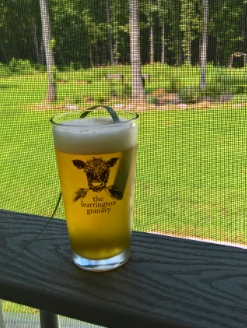Birdgunner
Well-Known Member
Or is it more efficient? lol
I stopped chilling wort and been doing the no chill with great success for the last 7 years or so but now with the recent addition of some Anvil fermenters it allows me (safely) to dump the wort right into the fermenter, wait 24 hrs to pitch the yeast...more like sprinkle it on top and let nature do its thing. Not proud to admit this but on occasion I did fill direct from the kettle into glass carboys but this scared the sh*t out of me, knew one day it would catch up to me with a carboy shattering but alas I can now put that risk behind.

Just carbed my 40th gallon ( a heavy load of lemongrass topped with lemondrop hops yielding a lemon bomb wheat) and it rocks, no off flavors or issues with this or any of the previous concoctions and just about to sprinkle some S05 and Nottingham on a fall amber I made yesterday, so far so good.
Mess with multiple vessels - nope (biac)
Chill wort - nope
Aerate - nope
Deal with glass - never again!
Cheers to those who are lazy like me (the Lemonbomb) and if you are lazier, please share your tips!

I stopped chilling wort and been doing the no chill with great success for the last 7 years or so but now with the recent addition of some Anvil fermenters it allows me (safely) to dump the wort right into the fermenter, wait 24 hrs to pitch the yeast...more like sprinkle it on top and let nature do its thing. Not proud to admit this but on occasion I did fill direct from the kettle into glass carboys but this scared the sh*t out of me, knew one day it would catch up to me with a carboy shattering but alas I can now put that risk behind.

Just carbed my 40th gallon ( a heavy load of lemongrass topped with lemondrop hops yielding a lemon bomb wheat) and it rocks, no off flavors or issues with this or any of the previous concoctions and just about to sprinkle some S05 and Nottingham on a fall amber I made yesterday, so far so good.
Mess with multiple vessels - nope (biac)
Chill wort - nope
Aerate - nope
Deal with glass - never again!
Cheers to those who are lazy like me (the Lemonbomb) and if you are lazier, please share your tips!

















![Craft A Brew - Safale BE-256 Yeast - Fermentis - Belgian Ale Dry Yeast - For Belgian & Strong Ales - Ingredients for Home Brewing - Beer Making Supplies - [3 Pack]](https://m.media-amazon.com/images/I/51bcKEwQmWL._SL500_.jpg)










































